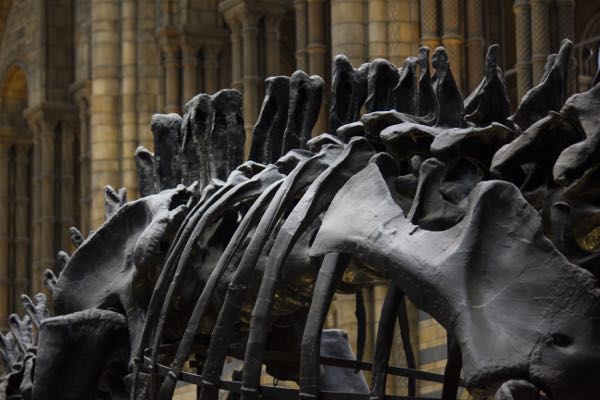Abstract: Were Dinosaurs Small?
A detailed census of mammalian fossils from the Newbern phosphate pits of North Carolina (Miocene, approx. 15 mya), if taken literally as complete, suggests that there were, in the Miocene Carolinas, no mammals smaller than rhinos, pigs, and camels. Of squirrels, rabbits, and mice, not even fossil teeth appear to have been preserved. That such animals were present is either very likely or certain. That they are not represented as fossils, given the imperfect means of preservation and the low probability of small bones entering the record, does not eliminate their presence in the Miocene environment. The fossil record (except where more randomly sampling and preserving volcanic ash layers, or anoxic lake muds, tar fields, and amber beds are involved) is notoriously imperfect, biased in favor of preserving thick bones and teeth with relatively large volumes and small surface areas. Resembling most saurian bone beds, the Newbern phosphate pits are aquatic in origin, reflecting the same preservation bias toward large bones. Absence of bones belonging to cat-sized and mouse-sized “mini-saurs” is not necessarily evidence of their absence, if mammalian fossil assemblages are a legitimate model. As with present-day mammalian habitats, it is possible that saurians smaller than horses and dogs predominated in late Cretaceous forests, and that even mouse-sized saurians await discovery in some atypical preservative environment. The Cretaceous fossil record, like Miocene Newbern, favors big bones and is an entirely aquatic preservation environment. In the very least, we are missing all of the alpine species. Until a more randomly preservative environment is unearthed, most (and, perhaps, almost all) of the saurian species that actually lived will remain hidden to us, paleontologically invisible.
Some Background: In February 1982, the discovery of unusual preservation in China still lay nearly a decade in the future; and thus did the above paper – more because of its tongue-in-cheek title than because of anything else – become a confusing and annoying target for some of my colleagues at Victoria University, New Zealand. Chief among the critics were zoologists John Wells and Robert Wear (Note the names you will encounter in the novel, Flying to Valhalla), Wells was a promoter of that decade’s most memorable oxymoron: “Scientific Creationism.” At a May 6, 1982 meeting intended to address emerging concerns about certain “heresies” contained in two forthcoming books (Darwin’s Universe and Time Gate), Wells had commented, “Pellegrino believes that dinosaurs were smaller than house cats. He doesn’t even know anything about this. The dinosaurs were big, Charles. Trust me on this: They were big.”
When paleontologists of the 1990s started unearthing tiny dinosaurs from unusual preservation beds in China, they sent to Pellegrino, as a gift, one of the world’s first known “mini-saurs.”
The Role of Desiccation Pressures and Surface Area/Volume relationships on Seasonal Zonation and Crustacea From New Zealand: Implications for Adaptaion to Land. (.PDF)
This was officially a project in Paleobiology, but primarily it was an actually engineering thesis, involving development and testing of the first means of accurately measuring the surface areas of complex irregular objects (ranging from crabs to crystal clusters. Before spreading to world-wide laboratory use, the method was applied here to solving an evolutionary theory involving surface area-volume relationships, never before actually proved.
Previously printed in CRUSTACEANA, vol 47, part 3, 1984.
The Trouble with Nemesis — Using a conservative sample of five major impact events with age uncertainties <= 2 Myr, a pattern of accretion events post-synchronous with climatic cooling and withdrawal of the seas from the contintental shelves emerges.

